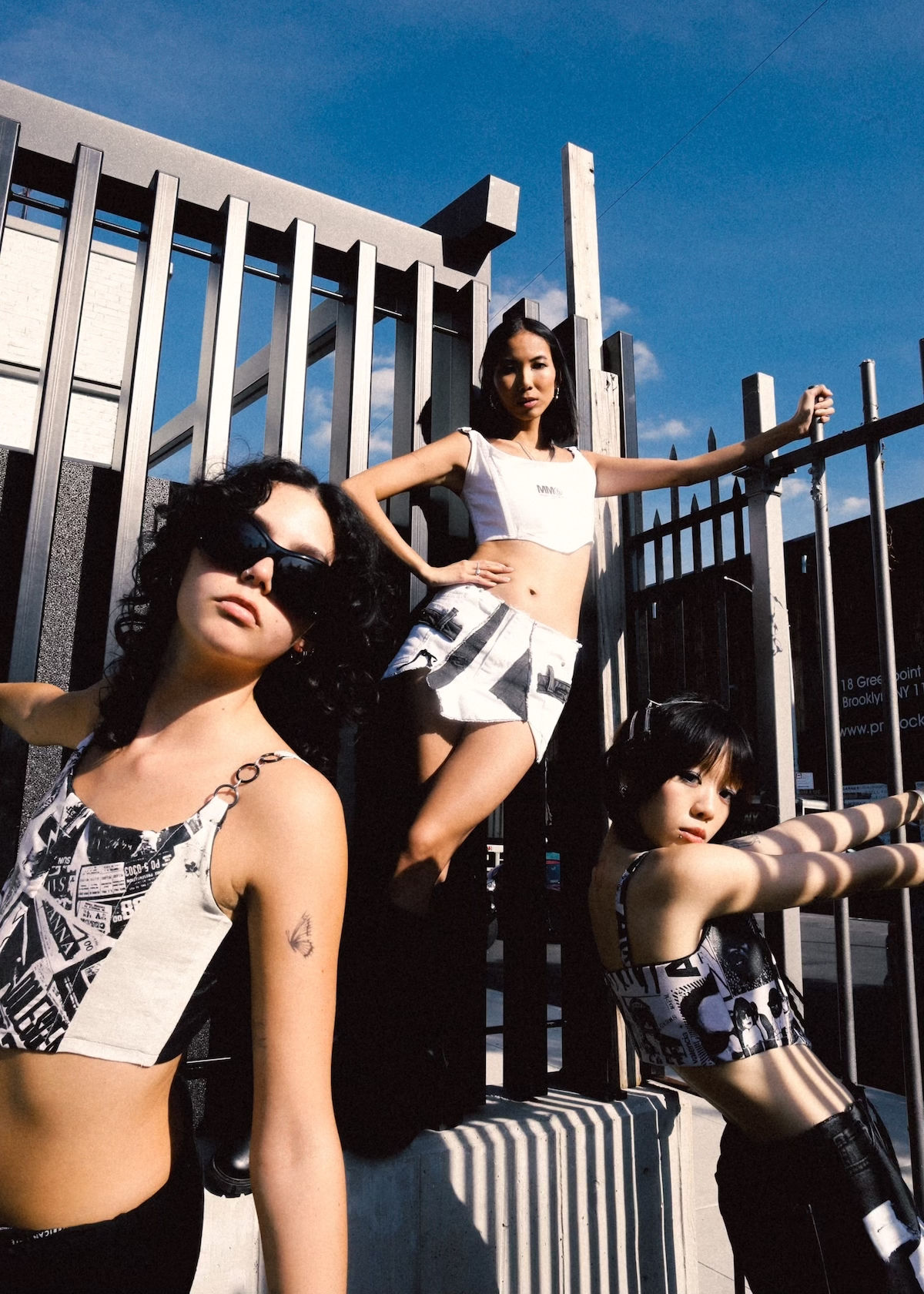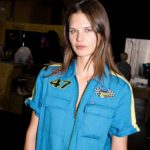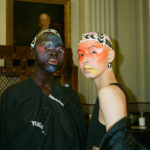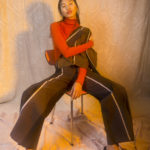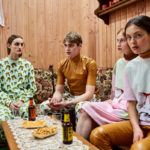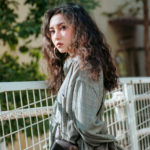[Best_Wordpress_Gallery id="2" gal_title="Berlin Fashion Week July 2018"] Berlin Fashion Week street style snaps at Seek…
Annie Lian
an interview with the designer and her eponymous brand17 December 2024
Annie Lian is a Brooklyn-based designer whose focus is on sustainability. YEOJA Mag sat down with Annie to talk about her inspirations, life after FIT, the city as inspiration, and sustainability in fashion - amongst other things:
Hey Annie, we hear you are Brooklyn based! As a Long Island girlie, did you arrive in New York originally for your education at FIT (Fashion Institute of Technology)? How was the adjustment from Long Island to New York City for you?
Annie Lian: I actually commuted to FIT during college, so I didn’t officially move to Brooklyn until I graduated in 2019. Still, NYC always felt like a second home to me. Growing up, my family would take weekend trips to Chinatown, and in high school, my friends and I were always exploring the city and Brooklyn. During college, I was commuting back and forth from Long Island and occasionally crashed on friends’ couches when I needed to—it felt like I was living in NYC part-time. Just being here opened me up to so many resources, from events and cultural spots, to being surrounded by a diverse crowd.
Moving here full-time opened up even more opportunities and helped me meet people I felt deeply connected with. Living in NYC has introduced me to people from all over the world who I stay in contact with and even have international experiences with—it feels like a cultural exchange, and it’s exciting because we can visit each other in our cities. The only thing I really had to adjust to when I moved here was getting used to living with so many people in close proximity, which I definitely wasn’t used to in the suburbs. However, I think that’s what holds the community together: knowing that so many people from different backgrounds and lifestyles are in the same space, sharing the same experiences.
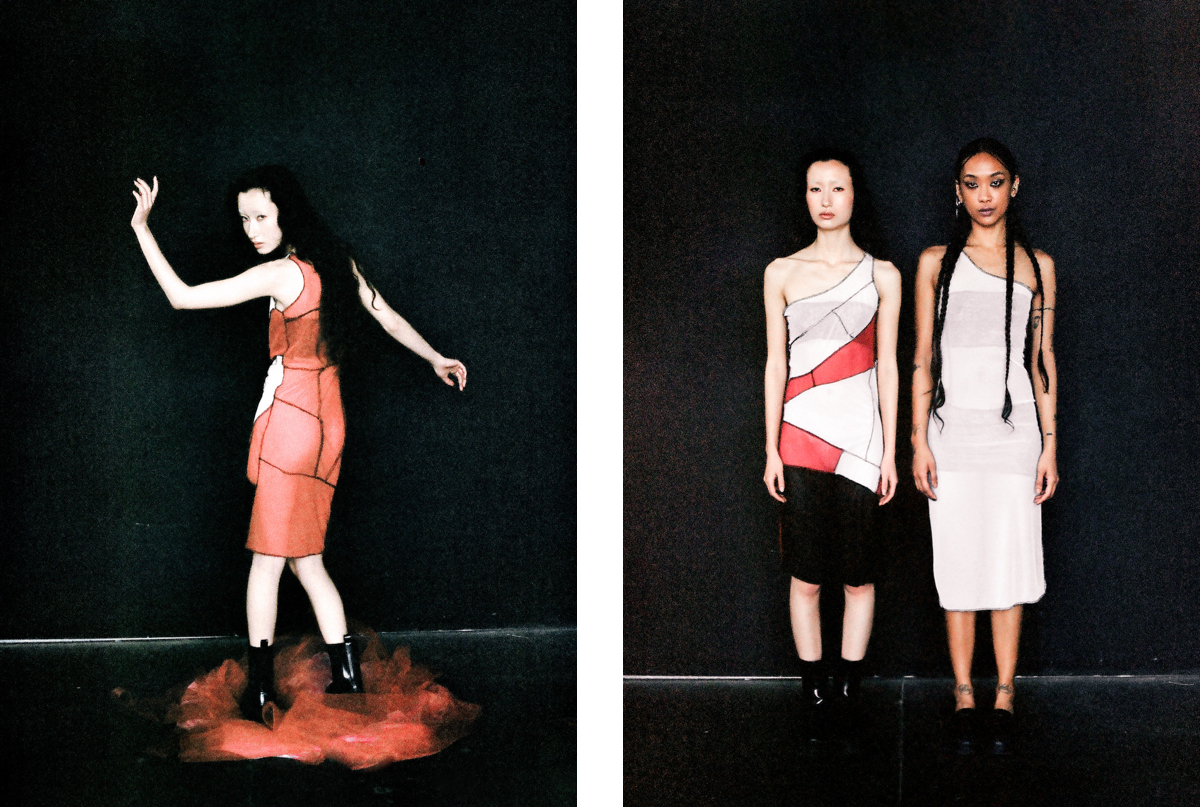
MUA: Sophie Harnett (@sophie_hartnett),
Models: Mitsuki Lee (@mitsukileemiyamoto), Bea (@beasically)
When it comes to your fashion influences, who and what are your main references?
Annie Lian: I love designers who are unconventional, avant-garde, and cutting-edge because they challenge traditional norms and push the boundaries of fashion. Designers like Margiela, Alexander McQueen, and Vivienne Westwood blend art with fashion, creating pieces that feel more like statements than just clothing. I also love designers like Heliot Emil, Eckhaus Latta, and Ottolinger. The way they experiment with texture, form, and subversion of conventional silhouettes makes fashion feel more raw and innovative. I am also heavily influenced by local and underground designers from NYC and London, especially my friends, because they’re all so talented and inspire my own style.
How do you think the city itself has been a supporting character in your life and your fashion? Do you see a big difference between your work prior to moving to the city?
Annie Lian: Living in NYC has truly shaped who I am as an artist. Being in the center of such a vibrant creative hub, surrounded by galleries, art, and major cultural events, has opened my eyes to new perspectives and inspiration. I’ve had the chance to connect with talented, creative people from all over the world who support and inspire me, and I’m incredibly grateful for that. Over the past five years, my work has definitely evolved—my style and taste shifting along with the city’s energy and ever-changing trends. Being here has pushed me to constantly grow and adapt, and I can see a clear difference not only in my work but also in my personality and mindset since moving to NYC.
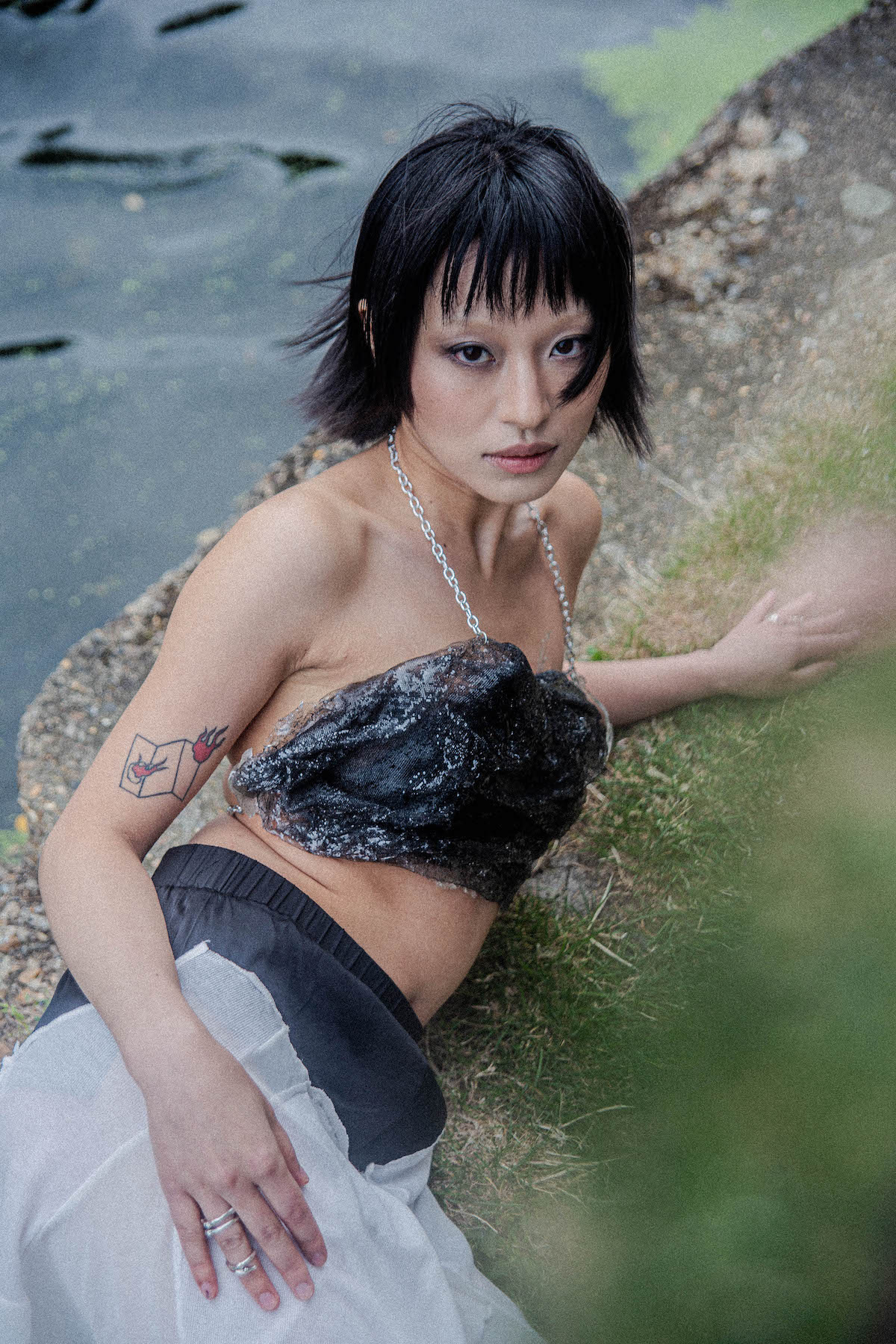
Model: Victoria (@vicxxciii)
How has your work evolved since graduating from FIT? You mentioned that your work is heavily inspired by the DIY scene – was there a specific FIT bubble (in terms of culture and aesthetics as well as socioeconomic demographics of students) that differs from underground DIY spaces existing outside of FIT?
Annie Lian: My work has evolved so much since graduating from FIT. It’s been about five years now, and my whole medium has changed—I never imagined becoming a sustainable designer, especially with my background in Fine Art and Textiles. Back then, even the idea of fashion design felt intimidating. I remember taking a Pre-College Fashion Design course and not even completing it because being in that space felt daunting at the time. Since I commuted, I was often seeking resources outside of FIT, researching events that aligned with my interests and finding ways to get involved. That’s ultimately what led me to the DIY scene.
Although I met some great people at FIT, I felt that the community there didn’t have the same raw, authentic energy I was looking for. I had to step out of my comfort zone to find that in the underground DIY spaces outside of school. Those spaces were more accessible and experimental, which has shaped my approach as a designer today.
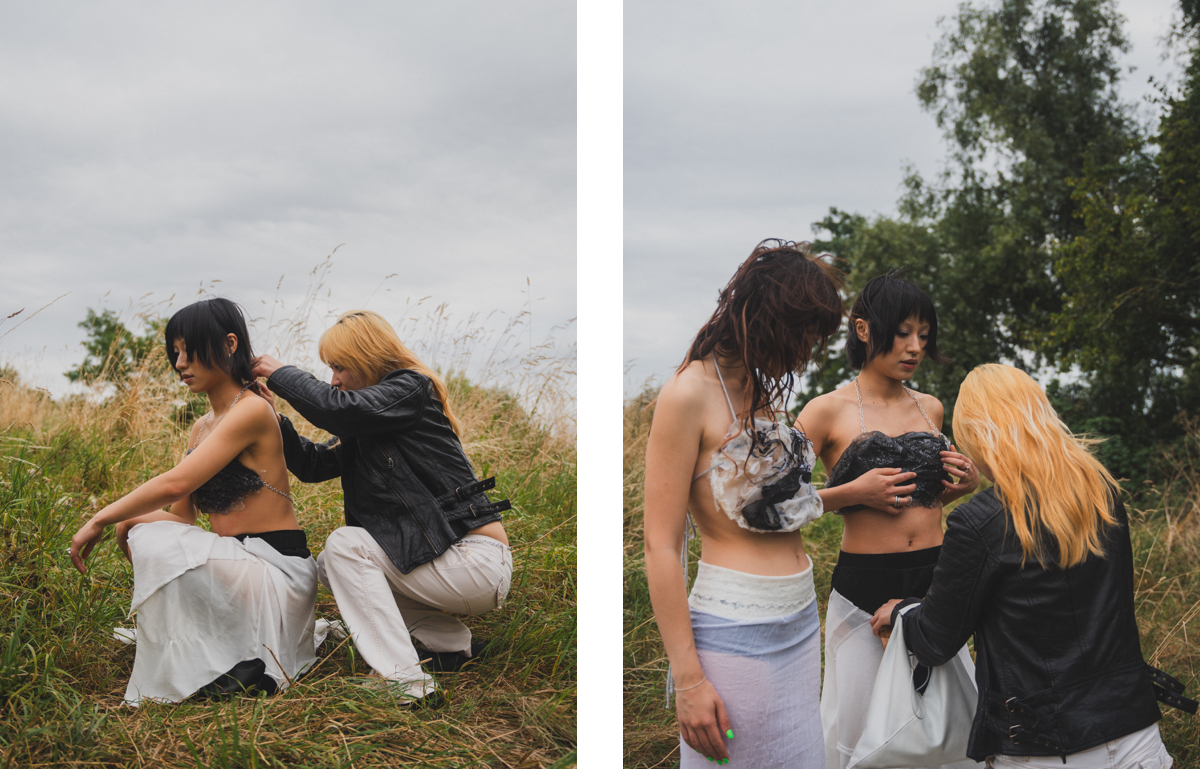
Fast fashion culture has created a never-ending merry-go-round, turning out micro seasons faster and faster. It is estimated that brands are launching anywhere from six to twelve collections each year, with fashion analysts even finding that certain major fast fashion retailers may produce upwards of 52 micro seasons annually. These items generally range anywhere from about $5 to $50 USD (€4.65 – €46.50 EUR). (1) As an independent business, how do you feel that the expectations set by fast fashion have impacted how your customers view your speed of production and pricing, and business as a whole for independent designers?
Annie Lian: Fast fashion is definitely a challenging industry to compete with, and it will probably take time for the vast majority to realize that the value of our work lies not only in craftsmanship but also in the time and dedication we put into creating unique pieces that you won’t find in everyone’s closet. The girlies who get it, get it– and the ones who don’t, don’t.
As an independent designer, I think each of us has our own niche that targets a very specific audience. Even though this makes it more challenging to find our customers, it makes it even more exciting when you do because it introduces you to people who appreciate and understand your work, making the connection even more meaningful. Investing in a piece that takes time and thought is about the experience; the more you spend on a unique item, the more likely you are to wear and cherish it for a long time. This is different from buying ten inexpensive items that quickly lose their significance.
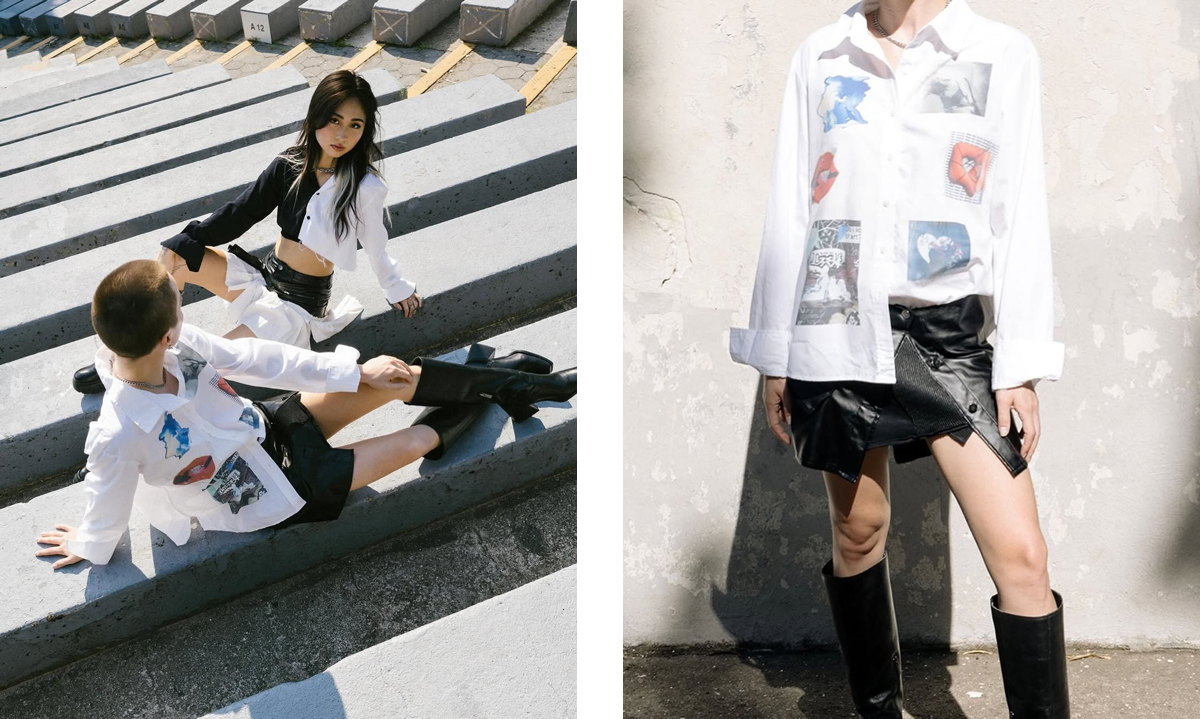
Models: Tabs (@josephinereitman), Fiona (@fi.o.na_)
The topic of fast fashion is complex. A significant number of fast fashion consumers come from the Global North (countries in North America and Western Europe). It is estimated that about 10-22% of the Global North is living just above the poverty line. (2) Thus, while there has certainly been a growing culture of conspicuous consumption, the consumption of fast fashion in the Global North also involves individuals trying to stay within their budgets. Yet, there is no denying that fast fashion hurts independent designers by undercutting prices, overcrowding the market, copying designs, and influencing consumer perception – just to name a few. How do you reconcile this as an independent designer?
Annie Lian: As an independent designer, I like to carry pieces within a price range that can accommodate different budgets. I want people from any income bracket to have the opportunity to own something unique from my collection. I understand that for many consumers, especially those on a tight budget, it can feel tricky to invest in a more expensive piece. But what makes it worthwhile is the longevity and significance a quality piece can bring. When you invest in something thoughtfully crafted, it becomes more than just an item in your closet; it’s something you can wear over many seasons, creating memories along the way. A well-made piece often lasts much longer and holds more meaning than multiple fast fashion items that quickly lose their value.
Quality pieces can provide a sense of purpose and personal expression that goes beyond temporary trends. It’s about creating a sustainable wardrobe that you’re connected to, rather than being caught in a cycle of disposable fashion.
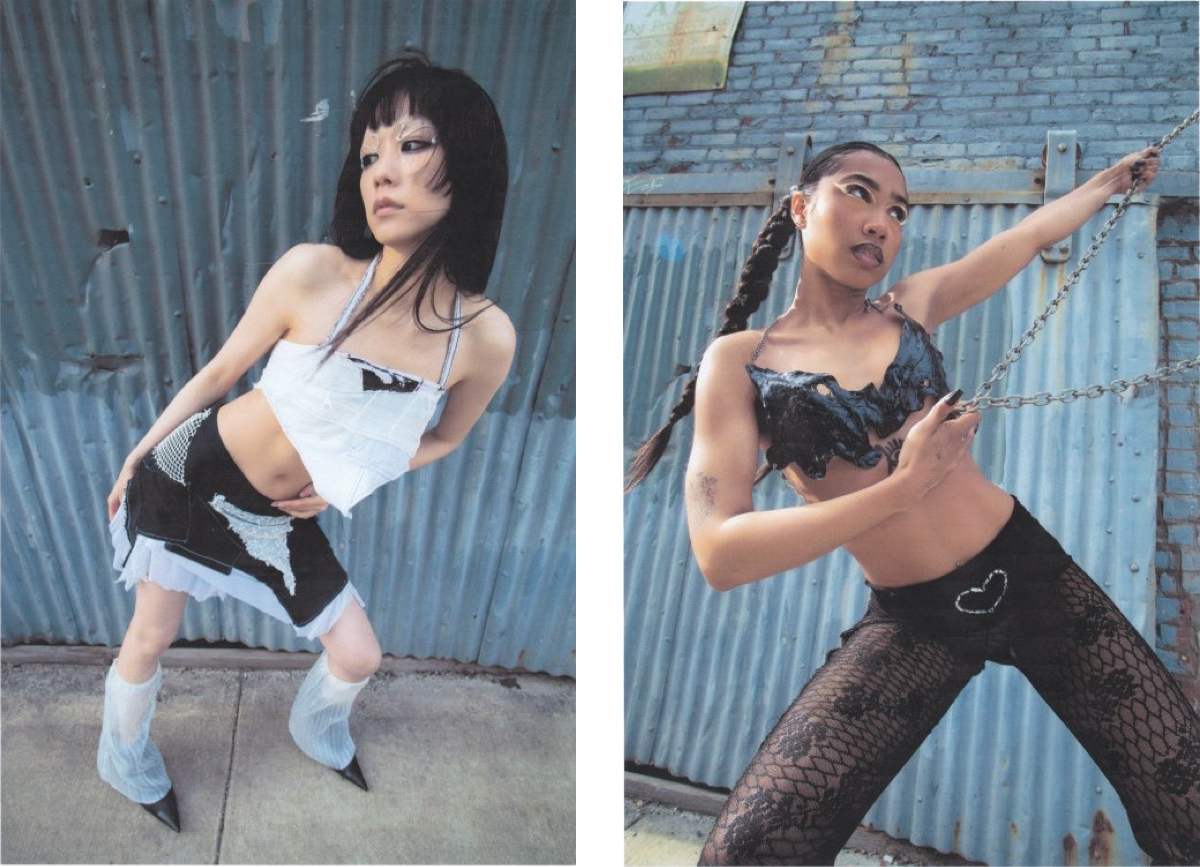
MUA: Ana (@8.14ana),
Models: Karin (@karinnowhere), Jordyn Simmons (@jordynbrianasimmons)
How has your identity as an Asian-American femme designer impact your work? We’ve seen in your editorials that the casting is very BIPOC-centric. Is this born out of your own desire to create more diverse spaces and representation in the fashion industry? Have you thought about other underrepresented demographics like size inclusivity as well as those with disabilities?
Annie Lian: My identity as an Asian-American femme designer has definitely made me more open and conscious of including diverse perspectives. Growing up with the experience of being part of a minority has allowed me to understand the importance of seeing representation across different backgrounds. When I began casting for my editorials, I wasn’t necessarily aiming to focus on BIPOC talent. I would simply choose people who felt interesting or visually compelling to me, but I later realized this often brought together individuals from a wide range of ethnicities. I think this natural gravitation toward diversity speaks to my desire to create spaces where different backgrounds are celebrated, bringing fresh perspectives and breaking away from a homogenous look in fashion.
As for expanding representation beyond ethnicity, I am definitely considering size inclusivity and differently-abled talent as well. Fashion should reflect all people, and I want my work to resonate with as many individuals as possible. So, moving forward, I’m excited to explore more ways to represent various body types and people with disabilities in my designs and editorials.
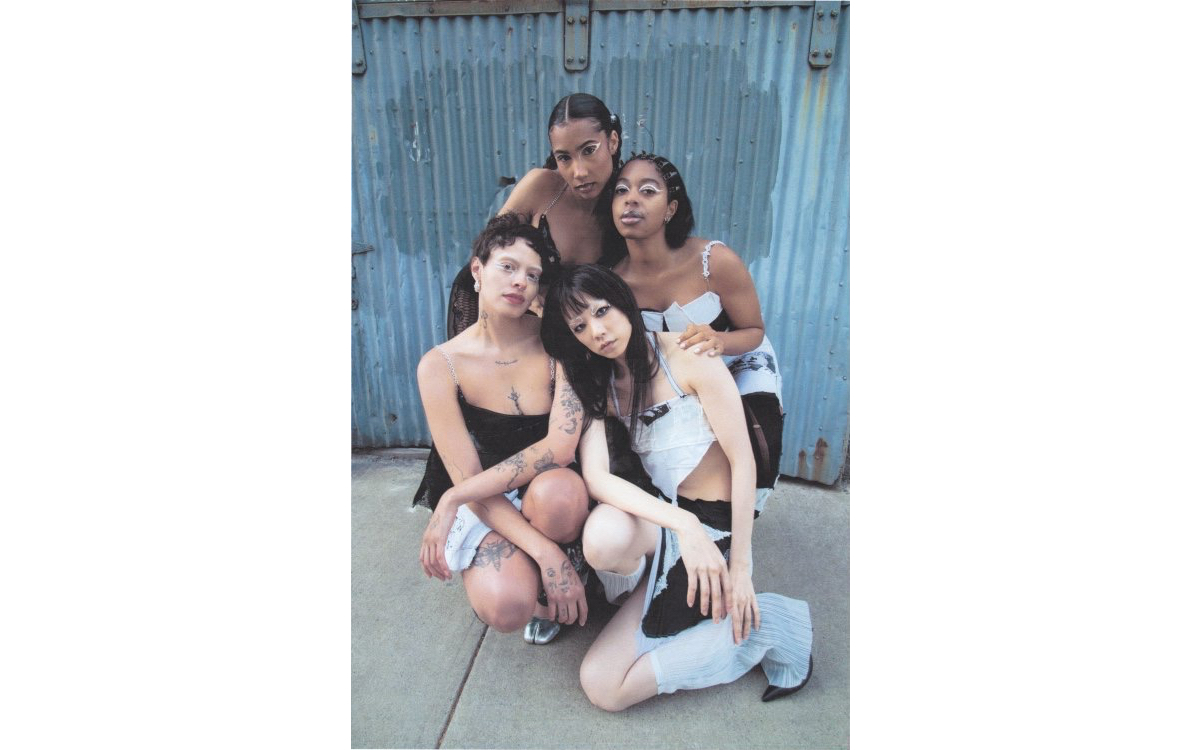
MUA: Ana (@8.14ana),
Models: Jordyn Simmons (@jordynbrianasimmons), Jeheli Odidi (@jeh.z), Tirzah Athena (@soggyhormones), Karin (@karinnowhere)
Rewinding a bit and going back to NYC as a theme in relation to your collaborations with other creatives – NYC is such a hub for creativity with highly motivated people looking to make things happen. Your editorials have allowed you to collaborate with other creatives based in NYC from other disciplines like photography, styling, makeup, etc. What are your views on the NYC creative scene? Is it a welcome and collaborative space? Or competitive and cold? A mix of both?
Annie Lian: From my experience collaborating with people from different cities, I think NYC is the most collaborative and the quickest at making things happen. Everyone is constantly creating and working on new projects. I think there’s a rush of adrenaline and excitement to bring ideas to life and to connect with more artists and creatives. As long as you find the right people who share a similar vision and are mutually supportive, you’ll find plenty of people who are ready to work together.
What is the most rewarding part of your work?
Annie Lian: The most rewarding part of my work is the community aspect of meeting like-minded people who get it, and also making meaningful friendships from my craft and collaborations.
I think the opportunity to meet people, connect with other creatives from different cities, and collaborate to build meaningful connections is incredibly rewarding.
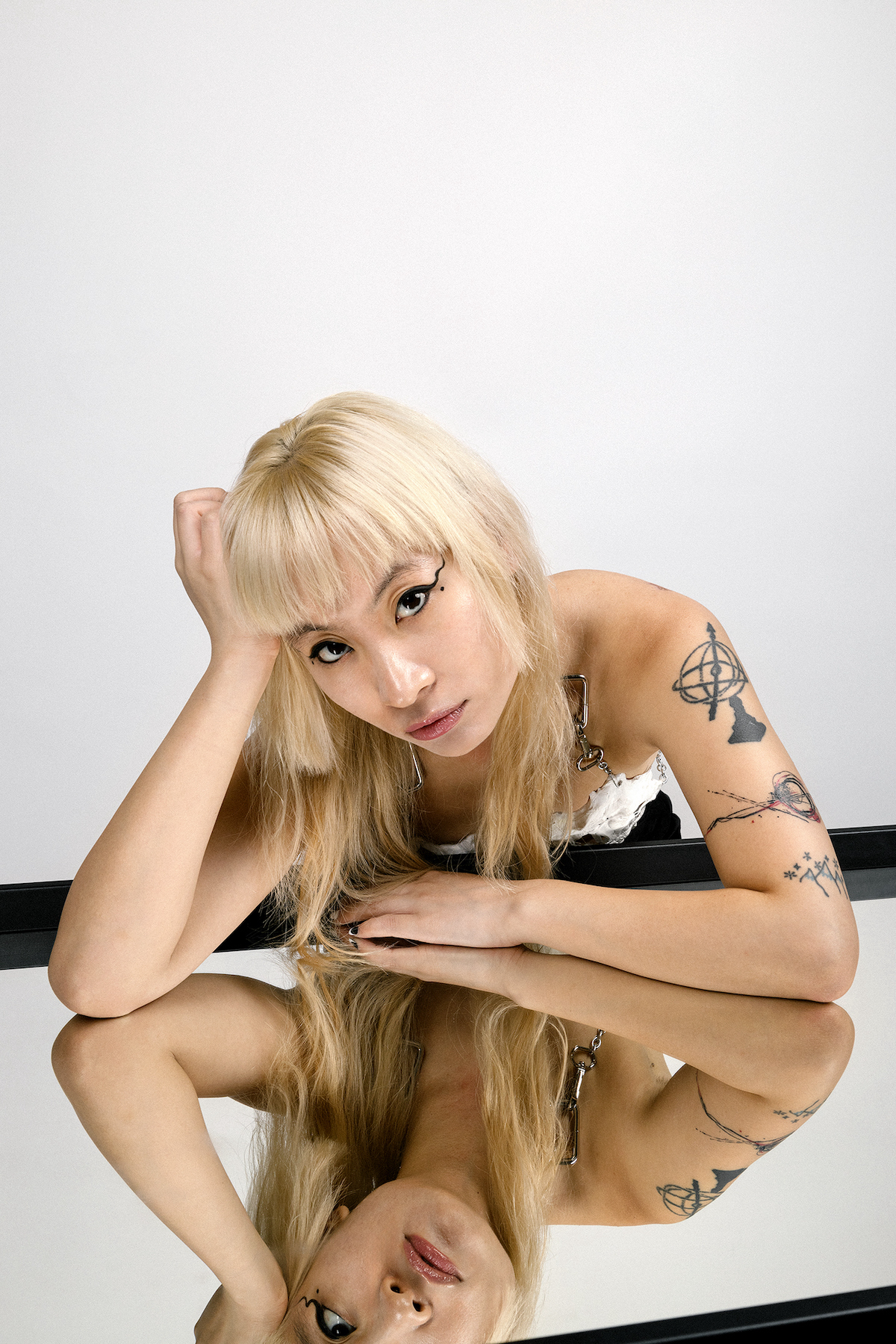
Lastly, what do you have in store for the rest of 2024 and are there any exciting projects we can expect from you in 2025?!
Annie Lian: Well, I just got flown out to Florida for the first time to have a fashion show, and now I will be going to LA to have a pop up market! I haven’t planned anything for 2025 yet, but hopefully there will be more travel opportunities and fashion shows involved.
Thank you, Annie!
___
1: Business of Fashion, “The Race to Keep Up With the Fast Fashion Machine”; McKinsey & Company, “The State of Fashion 2022”; Vogue Business, “Fast Fashion’s New Normal.”
2: U.S. Census Bureau, “Income and Poverty in the United States,” 2021; Eurostat, “People at Risk of Poverty or Social Exclusion.” OECD, “Society at a Glance 2021: OECD Social Indicators.”; World Bank, “Poverty and Equity Data.”; Joseph Rowntree Foundation, “UK Poverty,” 2023.
__
To follow Annie Lian’s fashion brand, click here. For more interviews with Brooklyn-based creatives, click here. For more interviews with fashion designers, click here.



